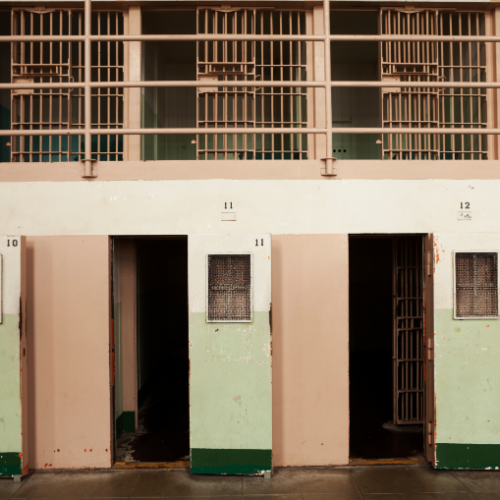This is the fifth in a series of posts on aspects of successful reentry. Each post will include curated resources related to the featured reentry topic.
The primary function of correctional supervision was once seen as control and custody; however, corrections agencies have increasingly come to recognize that focusing on rehabilitation and planning for reentry are fundamental to their missions to increase public safety. As a result, correctional policies and practices have shifted to incorporate a variety of strategies to better prepare people for their release from prison or jail and reduce recidivism, including assessing criminogenic risk and needs, focusing on correctional staff training and wellness, and building effective partnerships with other agencies and community-based organizations.
Read more:
- Making People’s Transition from Prison and Jail to the Community Safe and Successful: A Snapshot of National Progress in Reentry
- Recidivism Reduction Checklists
Assessments Help Guide Programming
Risk and needs assessments can help corrections agencies use their resources efficiently by matching people with appropriate services and focusing resources on those who are assessed as having the highest risk of reoffending. The results of these assessments can provide a roadmap for identifying what types of interventions will be most effective in individual case planning and management and can inform supervision intensity, programming requirements, and treatment referrals. High-quality assessments require well-trained staff to conduct them, clear and periodically updated scoring guidelines, and ongoing quality improvement exercises.
Read more:
- In Brief: Understanding Risk and Needs Assessment
- Webinar: Risk Need Responsivity 101
- Risk and Needs Assessment in the Criminal Justice System (Congressional Research Service)
- RAQI: Risk Assessment Quality Improvement Checklist
- Three Things You Can Do to Prevent Bias in Risk Assessment
- A Five-Level Risk and Needs System: Maximizing Assessment Results in Corrections through the Development of a Common Language
Evidence and Research Inform System Improvements
In addition to using assessment results to inform individual supervision and programming decisions, corrections agencies are also increasingly using research and data to inform which programs they offer and larger-scale, system-wide improvements. Resources such as the National Reentry Resource Center and the National Institute of Justice’s Crime Solutions provide information on programs and practices that are most likely to reduce recidivism. At an organization- or system-wide level, strategies such as Continuous Quality Improvement and the action research model incorporate data on processes, practices, and outcomes to identify areas for improvement and solutions.
Read more:
- CrimeSolutions.gov: Corrections & Reentry
- Second Chance Act Grantees Use a Continuous Quality Improvement Approach in Corrections and Community Supervision
- Building and Implementing Research Partnerships
Partnerships Promote Success and Sustainability
Collaborating with other service systems and community-based organizations is crucial to the success and sustainability of recidivism-reduction efforts. Corrections agencies can share resources and information with the myriad agencies equipped to address the diverse needs of people under correctional supervision, such as education, employment, housing, health, behavioral health, and family support. Corrections officers can also work with victims’ services and with victims directly to help them receive financial compensation, which can aid in both the victim’s recovery and holding the person who committed the crime accountable. At the policy level, corrections agencies are engaging elected officials to champion effective programs and inform state- and county-wide improvements.
Read more:
- Community-Based Organizations and Corrections Agencies: Relationship-Building Questionnaire
- How Correctional Agencies Can Develop and Implement Collaborative Comprehensive Case Plans
- The Integrated Reentry and Employment Strategies Pilot Project
- New England Conference Highlights Regional Approach to Reentry
- With Help from Partners, Iowa Department of Corrections Tackles Statewide Recidivism
- Financial Support for Victims of Crime: A Quick Guide for Corrections and Community Supervision Officers
- Face to Face Initiative
Correctional Culture Is a Priority
Changes to an organization’s mission, policies, and practices can be challenging for corrections staff to navigate and adopt. To support their staff, corrections leaders can prioritize cultivating an organizational culture in which staff are confident in how they contribute to recidivism-reduction efforts. This includes soliciting and incorporating input from staff; investing in training; using clear and regular internal and external messaging about why and how new policies are instituted; and practicing positive reinforcement to sustain engagement.
Read more:
- Strengthening Correctional Culture: Eight Ways Corrections Leaders Can Support Their Staff to Reduce Recidivism
- Second Chance Act Spotlight: Grant Awards Help Iowa Corrections Officers Focus Efforts to Improve Reentry Outcomes
- Vermont Department of Corrections’ Four-Step Process for Effective Policy Development
- Implementing a Statewide Supervision Staff Training Initiative—Lessons Learned in Two States
Staff Wellness Is Vital
Another important aspect of supporting corrections officers is considering their health and wellness, as they face an increased risk for post-traumatic stress disorder, depression, anxiety, suicide, and poor physical health. Both primary trauma—caused by directly experiencing or witnessing death, violence, or threats at work—and secondary trauma—resulting from exposure to trauma and violence experienced by the people they serve and victims of crime—contribute to these health risks. Corrections agencies now acknowledge the toll the job can take on officers and are working toward addressing the stigma associated with asking for help, as well as promoting healthy coping strategies. Supporting staff to mitigate negative effects from the nature of their work can enhance their quality of life and ability to aid the people under their supervision.
Read more:
A positive school experience, where a child feels secure, is essential for their well-being. However, for many children…
Read MoreWhen returning to their communities from criminal justice settings, people with behavioral health needs face barriers in accessing…
Read More Supporting Children of Incarcerated Parents: Reimagining School and Community Collaboration
Supporting Children of Incarcerated Parents: Reimagining School and Community Collaboration
A positive school experience, where a child feels secure, is essential for…
Read More Bridging Communities and Correctional Systems: Q&A with CSG Justice Center Advisory Board Member Commissioner Nicholas Deml
Read More
Bridging Communities and Correctional Systems: Q&A with CSG Justice Center Advisory Board Member Commissioner Nicholas Deml
Read More
 Assigned to the Cloud Crew: The National Incarceration Association’s Hybrid Case Management for People with Behavioral Health Needs
Assigned to the Cloud Crew: The National Incarceration Association’s Hybrid Case Management for People with Behavioral Health Needs
When returning to their communities from criminal justice settings, people with behavioral…
Read More Meet the Medicaid and Corrections Policy Academy Mentor States
Meet the Medicaid and Corrections Policy Academy Mentor States
New Hampshire Department of Corrections Commissioner Helen Hanks presents at the Medicaid…
Read More Taking the HEAT Out of Campus Crises: A Proactive Approach to College Safety
Taking the HEAT Out of Campus Crises: A Proactive Approach to College Safety
The sharp rise in school shootings over the past 25 years has…
Read More










